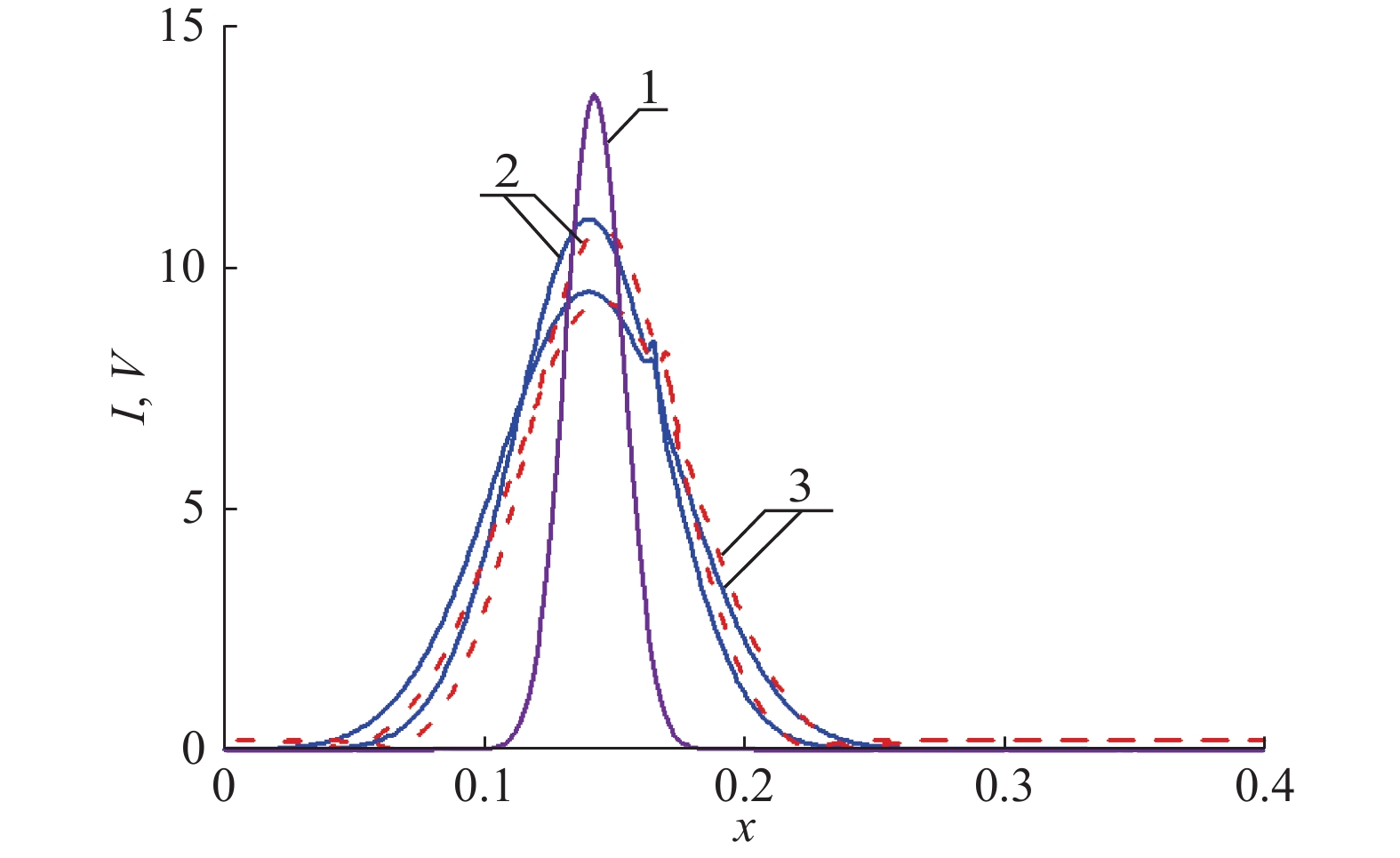| Citation: |
E. L. Pankratov. On correction of model of stabilization of distribution of concentration of radiation defects in a multilayer structure with account experiment data[J]. Journal of Semiconductors, 2018, 39(5): 053001. doi: 10.1088/1674-4926/39/5/053001
****
E. L. Pankratov. On correction of model of stabilization of distribution of concentration of radiation defects in a multilayer structure with account experiment data[J]. J. Semicond., 2018, 39(5): 053001. doi: 10.1088/1674-4926/39/5/053001.
|
On correction of model of stabilization of distribution of concentration of radiation defects in a multilayer structure with account experiment data
DOI: 10.1088/1674-4926/39/5/053001
More Information
-
Abstract
We introduce a model of redistribution of point radiation defects, their interaction between themselves and redistribution of their simplest complexes (divacancies and diinterstitials) in a multilayer structure. The model gives a possibility to describe qualitatively nonmonotonicity of distributions of concentrations of radiation defects on interfaces between layers of the multilayer structure. The nonmonotonicity was recently found experimentally. To take into account the nonmonotonicity we modify recently used in literature model for analysis of distribution of concentration of radiation defects. To analyze the model we used an approach of solution of boundary problems, which could be used without crosslinking of solutions on interfaces between layers of the considered multilayer structures. -
References
[1] Tarnavsky G A, Vorozhtsov E V. Dopant implantation into the silicon sub-strate with non-planar surface. Energy Power Eng, 2010, 2(2): 73 doi: 10.4236/epe.2010.22011[2] Ivchenko V A. Fabrication of submicrocrystalline structure in solid solutions by radiation-induced phase transition. Tech Phys Lett, 2013, 39(5): 442 doi: 10.1134/S1063785013050052[3] Barbashov V M, Kalashnikov O A. Methods of functional-logic simulation of radiation-induced failures of electronic systems based on the fuzzy state machine model. Russ Microelectron, 2017, 46(3): 155 doi: 10.1134/S1063739717030027[4] Lebedev A A, Ivanov A M, Strokan N B. Green luminescence band of zinc oxide films copper-doped by thermal diffusion. Semiconductors, 2004, 38(2): 124[5] Kalinina E V, Kossov V G, Yafaev R R, et al. A high-temperature radiation-resistant rectifier based on p+–n junctions in 4H-SiC ion-implanted with alumi-num. Semiconductors, 2010, 44(6): 778 doi: 10.1134/S1063782610060151[6] Lebedev A A, Belov S V, Mynbaeva M G, et al. Radiation hardness of n-GaN schottky diodes. Semiconductors, 2015, 49(10): 1341 doi: 10.1134/S1063782615100127[7] Tarasova E A. Analysis of radiation resistance of GaN, GaAs stractures. Proceedings of XVIII Conference on Radiophysics, 2014: 52[8] Vinetskiy V L, Kholodar G A. Radiative physics of semiconductors. Kiev: Naukova Dumka, 1979[9] Fahey P M, Griffin P B, Plummer J D. Point defects and dopant diffusion in silicon. Rev Mod Phys, 1989, 61(2): 289 doi: 10.1103/RevModPhys.61.289[10] Sokolov Y D. About the definition of dynamic forces in the mine lifting. Appl Mechan, 1955(1): 23[11] Pankratov E L. Dynamics of δ-dopant redistribution during heterostructure growth. Eur Phys J B, 2007, 57(3): 251 doi: 10.1140/epjb/e2007-00173-8 -
Proportional views






 DownLoad:
DownLoad:














